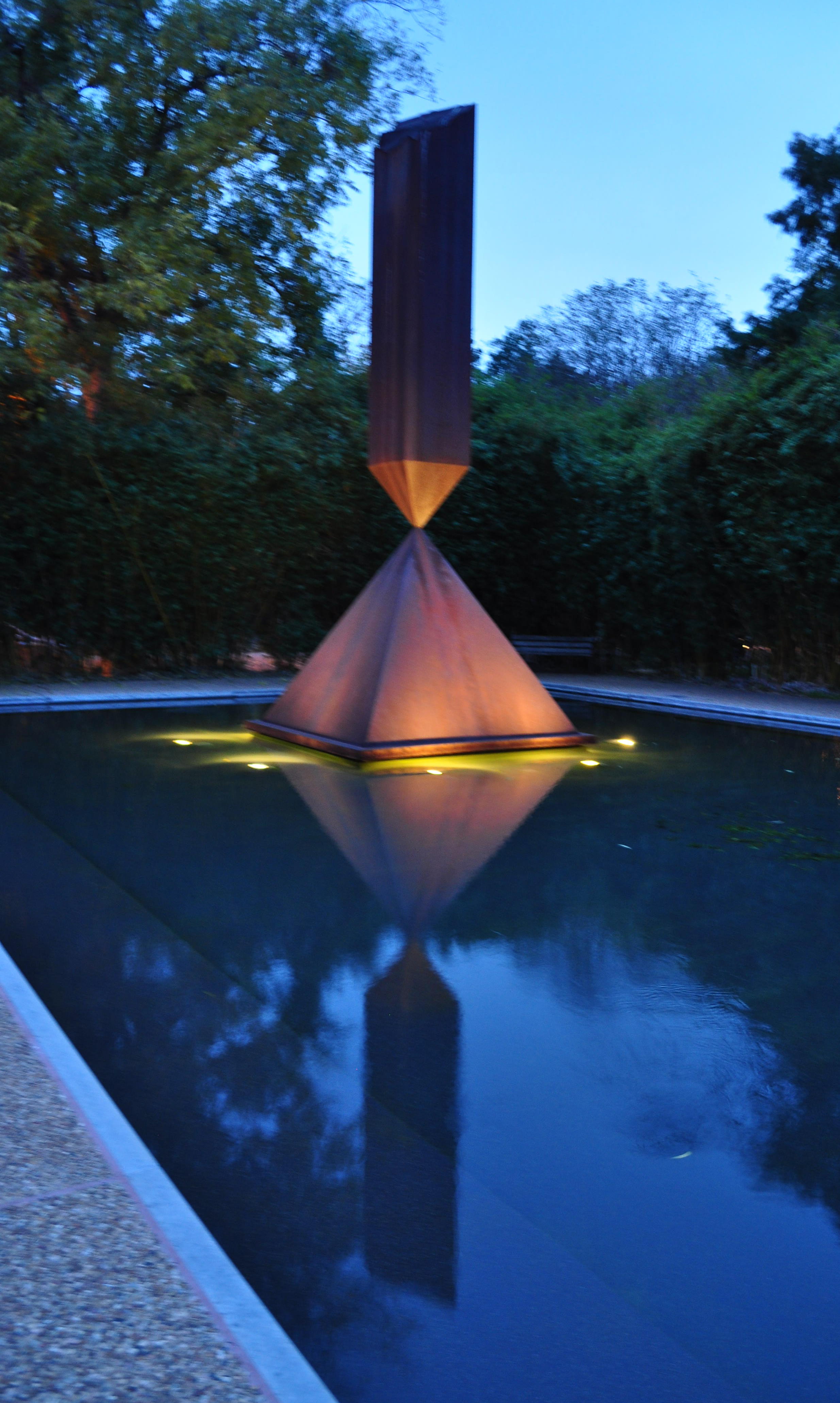Monday, January 16th, 2012
Martin Luther King, Jr. and Barnett Newman
Since today is Martin Luther King Jr., Day, and since I just wrote about the Rothko Chapel, I thought it would be fun to write a short post on Barnett Newman’s Broken Obelisk.
One of the casts for this sculpture rests outside the Rothko Chapel, although art collectors John and Dominique de Menil originally intended this sculpture to be placed elsewhere in Houston. In May of 1969 (about one year after Martin Luther King, Jr.’s assassination), John and Dominque de Menil donated money toward the purchase of this sculpture, stipulating that it was to be placed near City Hall in Houston and function as a monument to Martin Luther King, Jr. And as you can imagine (considering the political and cultural climate in the South during the 1960s), the city officials were prompted to refuse a sculpture that would be dedicated to the civil rights activist. So, the de Menils decided to place the sculpture elsewhere.
In the fall of 1969, Barnett Newman was flown to Houston to choose a new location for his sculpture. He chose to place Broken Obelisk in a pool outside the Rothko Chapel (which was under construction at the time and was commissioned by the de Menils). The only minor difficulty? A house was in the chosen location. The de Menils bought the house and tore it down without a moment’s hesitation.1
I think this sculpture is a powerful and fitting tribute to Martin Luther King, Jr. The form conveys a lot of strength and power to me, not only in its solid pyramidal base, but also in the vertical orientation of the obelisk. At the same time, though, the pyramid and obelisk come together in a really delicate balance. To me, this delicacy not only suggests the frailty of human life (MLK’s life, specifically), but the tension that existed in the South during the Civil Rights Movement.
1 James E. B. Breslin, Mark Rothko (Chicago: University of Chicago Press, 1993), 483-84.
